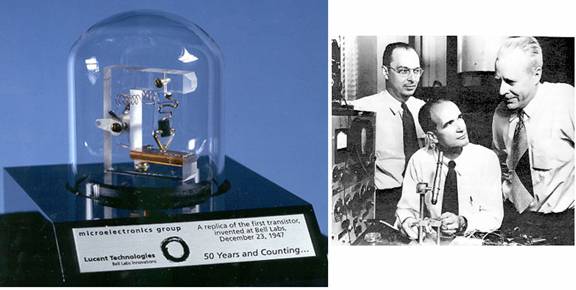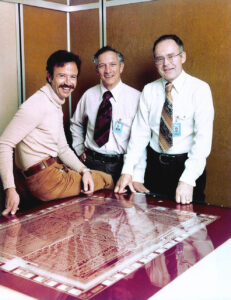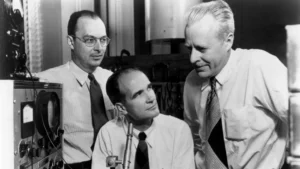The invention of the transistor in 1947 by John Bardeen, Walter Brattain, and William Shockley at Bell Laboratories marked a pivotal moment in the history of electronics.
However, this groundbreaking achievement was not without its controversies and disagreements, particularly concerning patent rights and recognition within the scientific community.
As the three scientists worked on developing the transistor, tensions arose over the extent of each individual’s contributions, leading to a rift that would impact their relationships and subsequent accolades.
Let’s delve deeper into the controversies and disagreements surrounding the invention of the transistor:
Bell Laboratories filed the patent for the transistor in June 1948, listing John Bardeen, Walter Brattain, and William Shockley as the inventors. However, the patent application did not explicitly outline the actual contributions of each scientist.
William Shockley’s Claims:
As mentioned earlier, William Shockley was known for making strong claims about his individual contributions to the invention of the transistor.
He argued that the fundamental idea for the transistor was his and that he played the most crucial role in its development.
Shockley’s assertion of sole authorship led to strained relationships with Bardeen and Brattain, who believed that the invention was a collaborative effort.
Bardeen and Brattain’s Perspective:
Bardeen and Brattain both maintained that the invention of the transistor was a team effort and that it resulted from a combination of their experimental work and Shockley’s theoretical understanding.
They believed that Shockley’s contributions were significant, but they also recognized their own substantial input. They rejected the notion that he should be credited as the primary inventor.
Patent Award and Nobel Prize:
The Nobel Committee awarded Bardeen, Brattain, and Shockley the Nobel Prize in Physics in 1956 for their invention of the transistor.
However, the Nobel Committee’s decision to include Shockley as a co-recipient sparked some controversy.
Some argued that Shockley’s self-promotion and claims of sole authorship should have disqualified him from receiving the prestigious award.
Impact on Relationships:
The disputes over patent rights and individual contributions strained the relationships between the three co-inventors.
Disagreements arose over how to handle the patent application and how to share the royalties. These tensions persisted even after they received the Nobel Prize and ultimately led to the dissolution of their working relationship.
Subsequent Legal Battles:
After the initial patent, there were further legal battles over the transistor’s patent rights and the royalties associated with its commercialization.
The legal proceedings not only involved the three inventors but also included Bell Laboratories, which claimed ownership of the invention since its employees made it during their employment..
Despite the controversies and disputes, it’s crucial to recognize that the invention of the transistor was a groundbreaking achievement that significantly impacted technology and society.
It revolutionized electronics and laid the foundation for the development of integrated circuits and the rapid advancement of the semiconductor industry.
While the disagreements and conflicts are part of the historical narrative, it’s the collaborative efforts of Bardeen, Brattain, and Shockley that resulted in one of the most transformative inventions of the 20th century.



